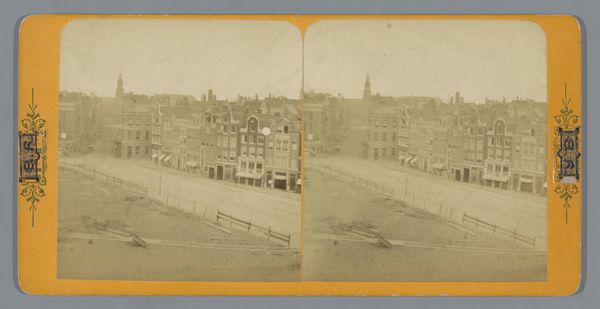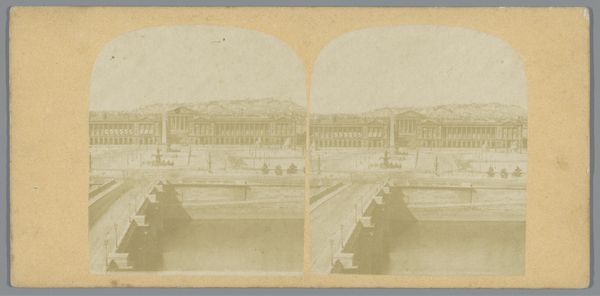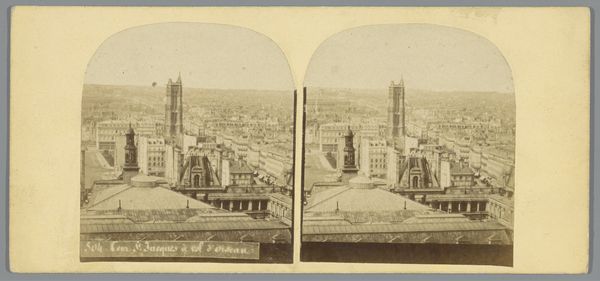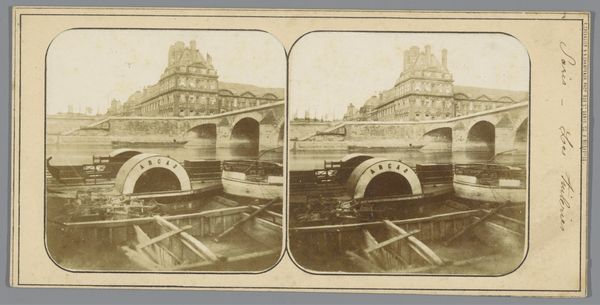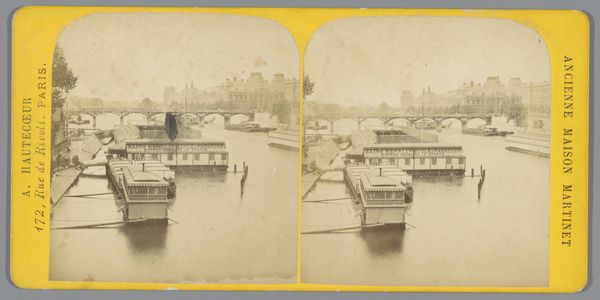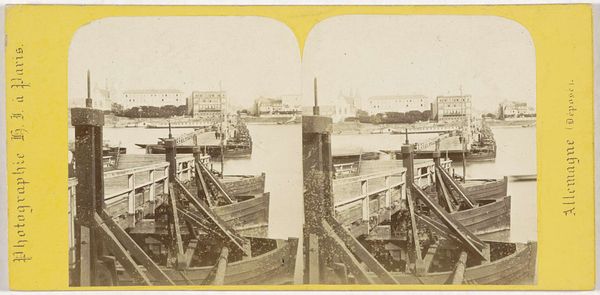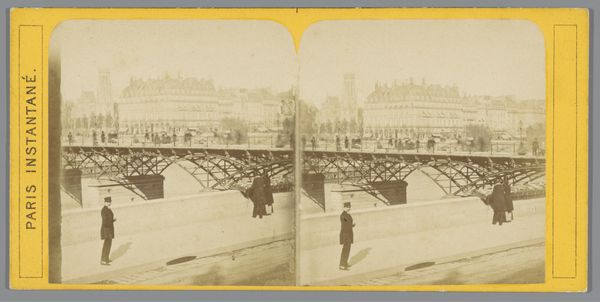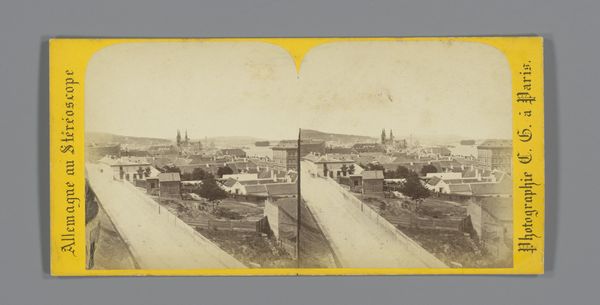
print, c-print, photography
# print
#
landscape
#
c-print
#
photography
#
coloured pencil
#
cityscape
#
realism
Dimensions: height 85 mm, width 177 mm
Copyright: Rijks Museum: Open Domain
Curator: This photographic print, “View of the Seine and various bridges in Paris," likely created between 1850 and 1880, offers a fascinating glimpse into the evolving cityscape. It's attributed to the workshop of LeCocq-Fréné. What are your initial thoughts? Editor: My first impression is of a hushed serenity. The muted sepia tones, almost monochromatic, imbue the bustling city scene with an unexpected calm. The intricate network of bridges, rendered with remarkable detail, becomes the dominant motif, structuring the image. Curator: The print process itself is noteworthy. The albumen print was a popular choice during this period, prized for its ability to capture fine details, as we see here in the architecture and the reflections on the Seine. This speaks to a growing interest in documenting and distributing images of urban life. Editor: Absolutely. The photograph's strength resides in its composition—the geometric arrangement of the bridges creates a series of receding planes that guide the eye deep into the cityscape. Note the interplay of light and shadow, accentuating the architectural forms, further defining their presence in the scene. Curator: And if we consider the social context, the mid-19th century in Paris was a period of intense urbanization, of Haussmann’s renovations, of bridging physical and social divides, this image is part of the project of documenting these changes but it's also the result of changing labor practices. New materials and increased distribution meant access to images was also shifting as these were reproduced en masse, changing the status of the artwork. Editor: I find it remarkable how the photographer uses a rather limited palette to evoke a sense of depth and atmosphere. It almost transcends its function as a mere record of urban development, achieving a kind of abstract beauty. Curator: Well, if we pull back a little, and examine those processes of photographic reproduction, we realize they are not merely aesthetic, but the material foundation of how we engage with our world. This image is not just about bridges; it’s about building social infrastructure. Editor: Perhaps we meet somewhere in the middle here; as our viewers reflect on this moment in time, it's undeniable how a perspective on artmaking opens a dialogue to social interpretation, and vice versa. Curator: Exactly. Ultimately, our interpretations build the meaning of an artwork.
Comments
No comments
Be the first to comment and join the conversation on the ultimate creative platform.


